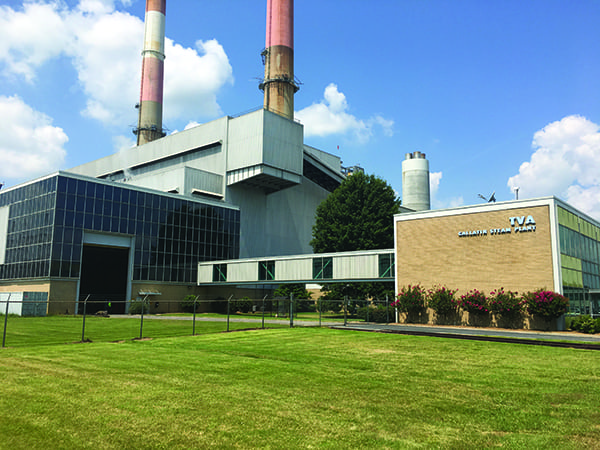New Year’s Resolutions: 10 Ways to Improve Coal Power Plant Operations

The new year is obviously a time when many people reflect on the past and make resolutions for the future. Surveys have shown that exercising more, improving one's diet, losing weight, and saving money are among the most common goals people set this time of year. While only the last item on that list is really applicable to a coal power plant, with the help of my friends at the Electric Power Research Institute (EPRI), I've come up with 10 items that could be added to a coal-fired power plant's list of New Year's resolutions.
Improving EfficiencyEPRI has been working with operators for decades to improve plant efficiencies. In fact, Sam Korellis, a technical executive with EPRI, who leads research and development in heat rate improvement, heat exchangers, and cooling systems, contributed an article on the topic of heat rate improvements for publication as an online feature with this issue of POWER. Furthermore, EPRI's Heat Rate Improvement Conference, now in its 40th year, is scheduled to be held Feb. 7-9, 2022, in Charleston, South Carolina. The event is the only formal gathering of its kind, offering two and a half days of presentations on various technical topics related to plant heat rate improvement.
POWER is no stranger to publishing articles on plant efficiency and heat rate improvements. Over our soon to be 140-year history-that's right, we'll be celebrating our 140th anniversary in October this year-one can only imagine how many pages have been devoted to the subject. One article published nearly a decade ago specifically comes to my mind. It references a 2010 EPRI study that identified cost-effective capital modifications and adjustments to plant operating procedures to improve heat rate during cycling operations. Today, as more and more coal-fired plants are being asked to cycle, I thought those still-relevant upgrade options were worth rehashing, so here goes.
Sliding-pressure Operation. With sliding-pressure operation, plant efficiency is increased by reducing turbine-throttling losses. This option was found to provide a 2% heat rate improvement at part load.
Variable-speed Drives for Equipment. Variable-speed drives reduce auxiliary power consumption of rotating equipment, thus increasing plant net output. The amount of savings can vary, but is often worth studying. Variable-speed drives can be expensive and may not be justified for older plants that could be retired in the near future.
Boiler Draft System Control Schemes and Operating Philosophy. Where multiple fans are operated in parallel, plant efficiency at low loads and under ramping conditions can be maintained and improved through the proper selection of startup and shutdown procedures. Depending on the load scenario, this method may allow auxiliary load reductions by operating fewer fans, but it can have a negative effect on reliability and lead to higher maintenance costs.
Automated Pulverizer Supervisory Controls and Variations with Mill Design. Firing systems and operating procedures can be optimized for each load level. The goal is to operate the least number of pulverizers to maintain stable coal-only flames while following load.
Optimum Partial-load Operation of Air Quality Control Systems. Plants with wet flue gas desulfurization (FGD) systems can reduce the number of operating recycle pumps with load reductions, resulting in reduced plant parasitic loads. Plants with electrostatic precipitators (ESPs), may be able to reduce ESP power consumption once the unit load has stabilized at the lower level by turning off specific electrical fields while still maintaining opacity and particulate emission rates at the regulated levels.
Feedwater Heater Drain System Modifications for Cycling. Typically, cycling efficiency losses occur at low loads when heater drains are routed to the condenser rather than to another feedwater heater, such as the deaerator. Plant efficiency at part load will be improved by ensuring that drains are directed to their most appropriate destination.
Cooling System Optimization. Where multiple cooling water pumps and cooling tower fans are operated in parallel, proper selection of component startup and shutdown schemes (dependent upon the load scenarios and ambient conditions) will allow auxiliary power reduction by removing pumps and fans from service, with the understanding that this action may increase maintenance and reliability risks.
Performance Monitoring. Several tools are available to display relevant parameters with respect to plant efficiency at various loads. These tools can be optimized to enable operators to prioritize corrective actions, thereby improving cycling efficiency.
Reducing Warmup Flow for Idle Boiler Feed Pumps. Heat rate improvement can be achieved by reducing warmup water flowrates from operating pumps to idle pumps. Less warmup water flow will reduce the auxiliary power consumption by the operating pumps.
Minimizing Flow, Pressure, and Temperature Oscillations During Cycling Operation. Some oscillations of temperature, pressure, and flow typically occur when plants are operating at steady-state loads, but they can be amplified during cyclic operation and result in a reduction in plant efficiency. Commercially available optimizers contain a forward-looking feature that minimizes the time that steam temperature strays from design, reducing attemperation spray flow and the heat rate effect of load following.
Study Systems and Take ActionPerhaps the single biggest enhancement a plant can make is to implement a performance or heat rate improvement program, if one doesn't already exist. Accurately monitoring the performance of power plant components and comparing parameters to design specifications will provide great insight and information that can help identify more areas for improvement.
Lastly, avoid the most common outcome of New Year's resolutions. Studies show that only 8% of Americans who make New Year's resolutions actually keep them all year long, and 80% have failed by the start of February. To be a top performing plant, you've got to have a continuous improvement mindset and not fall back into old habits.
-Aaron Larsonis POWER's executive editor.
The post New Year's Resolutions: 10 Ways to Improve Coal Power Plant Operations appeared first on POWER Magazine.